Disclosure: This article contains affiliate links. We may earn a commission from purchases at no extra cost to you, which helps our travel content.
Standing at the rim of Fish River Canyon in the soft glow of dawn, I found myself caught in that familiar filmmaker's dilemma—to capture this majestic scene or simply absorb it. The second-largest canyon in the world stretched before me like nature's own cinematic masterpiece, a 500-million-year-old geological epic carved into Namibia's ancient terrain. After decades of filming wildlife across Africa's most remote regions, I've developed a particular fondness for this harsh yet captivating landscape. The Fish River Canyon trek isn't merely a hike; it's a 5-day journey through 85 kilometers of challenging terrain that demands respect, preparation, and a spirit of adventure. As a solo female traveler in my sixties who's traversed this route three times now, I've gathered insights that go beyond the standard guidebook advice. This canyon demands your full attention—but rewards you with an intimate connection to one of Earth's most spectacular wilderness areas.
Preparation: The Foundation of a Safe Solo Trek
When I first contemplated tackling Fish River Canyon solo at 55, many questioned my judgment. Five years and three successful treks later, I maintain that proper preparation is what transforms this challenging journey from potentially dangerous to deeply rewarding.
The mandatory medical certificate requirement isn't bureaucratic red tape—it's essential wisdom. The canyon's remote nature, extreme temperatures, and physically demanding terrain make health preparedness non-negotiable. My most recent certificate required a full physical, EKG, and frank conversation with my doctor about the specific challenges of high-exertion hiking in arid conditions.
Permit acquisition should begin months before your planned trek. The Namibia Wildlife Resorts office limits daily entries, and the hiking season (May to September) books quickly. I've found applying 3-4 months in advance to be the sweet spot for securing your preferred dates.
Physical conditioning cannot be improvised. My regimen included three months of targeted training: loaded backpack hikes on varied terrain, strength training focusing on lower body and core, and heat acclimation exercises. Remember, you'll be carrying everything you need for five days, including water for stretches between reliable sources.
I cannot overemphasize the importance of studying the route thoroughly. The canyon offers no marked trails, and navigation requires reading the landscape. Before my first trek, I spent weeks reviewing topographic maps, studying trail notes from previous hikers, and watching documentary footage (including my own wildlife filming expeditions in similar terrain).

💡 Pro Tips
- Start physical training at least 3 months before your trek with loaded backpack hikes
- Apply for permits 3-4 months in advance through Namibia Wildlife Resorts
- Get your medical certificate completed within 40 days of your trek start date
Essential Gear for Canyon Survival
My filmmaker's background has taught me that equipment failures in remote locations can quickly escalate from inconvenience to emergency. For Fish River Canyon, your gear selection is quite literally your lifeline.
Footwear deserves singular attention. After experimenting with various options, I've settled on well-broken-in hiking boots with ankle support, paired with gaiters to prevent sand infiltration. The canyon's terrain alternates between sharp rocks, loose scree, and deep sand—all punishing on feet. I always carry two pairs of quality hiking socks per day, as keeping feet healthy is paramount when you're days from evacuation points.
Water management requires strategic planning. I carry a water filtration system despite reports of potable river water, as conditions change seasonally and water quality is unpredictable. Three liters minimum carrying capacity is essential, with the understanding that on certain stretches, you'll need to carry more.
Temperature regulation demands specialized gear. Daytime temperatures can soar above 30°C (86°F), while nights can drop below freezing. My layering system includes moisture-wicking base layers, a quality down jacket that compresses small, and a lightweight but sturdy tent that can withstand the occasional fierce canyon winds.
Navigation tools remain critical despite technological advances. While I do carry a GPS device, I never rely solely on electronics. A detailed topographic map in a waterproof case, compass, and the knowledge to use them have saved many trekkers when batteries fail or devices break.
First aid preparedness for solo trekking must be comprehensive. Beyond the basics, I include blister treatment supplies, electrolyte replacement, broad-spectrum antibiotics (prescribed by my travel doctor), and emergency signaling equipment.
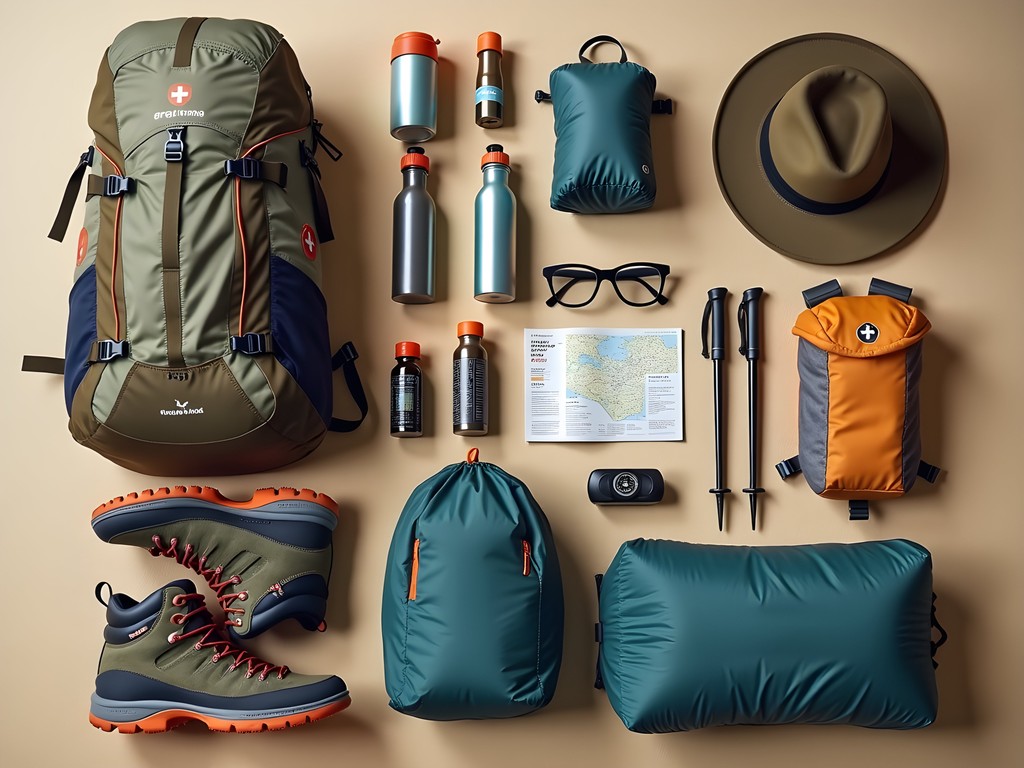
💡 Pro Tips
- Break in your hiking boots with at least 50 miles of hiking before the canyon trek
- Pack a comprehensive first aid kit including blister treatment and prescription medications
- Always carry a minimum of 3 liters water capacity, with the ability to expand to 5 liters for longer stretches
Navigating the Canyon's Challenges
The initial descent into Fish River Canyon remains one of the most technically challenging segments of the entire trek. This 500-meter near-vertical drop requires careful footwork and full concentration—a baptism by fire that has turned back many unprepared hikers. I tackle this section at first light, when temperatures are cool and visibility is optimal. Using my trekking poles for stability, I take this section deliberately slow, placing each foot with intention rather than momentum.
River crossings present variable challenges depending on the season. During my June trek last year, the river was low enough to rock-hop across most sections, but several thigh-deep crossings were unavoidable. The current, while generally gentle, can be deceptively strong in narrower sections. I've adopted the practice of changing into dedicated water shoes for crossings and keeping my boots dry—wet boots in this environment quickly lead to debilitating blisters.
Route finding becomes particularly complex around the 40km mark, where the canyon widens and multiple potential paths emerge. The shortcut trail near Palm Springs can save considerable distance but requires confident navigation. I've found that following the river, while longer, provides more reliable access to water and clearer directional cues. When in doubt, I refer to my annotated map where I've marked major landmarks from previous expeditions.
Wildlife encounters, while rare, demand respect. I've filmed wildlife professionally for decades, and the same principles apply here—maintain distance, make your presence known, and never approach or corner animals. The canyon hosts leopards, baboons, and various snake species. Most will avoid humans, but awareness of your surroundings is crucial, particularly when selecting campsites.
The psychological aspect of solo trekking in such isolation cannot be overstated. The canyon's immensity can be both awe-inspiring and intimidating. I maintain a daily journaling practice, documenting both practical observations and emotional responses. This serves both as a safety record of my route and as a grounding ritual that helps manage the inevitable moments of doubt or anxiety that come with such profound solitude.

💡 Pro Tips
- Tackle the initial descent during early morning hours when temperatures are cooler
- Use the river as your primary navigation reference when in doubt about the route
- Select campsites on elevated ground away from potential flash flood zones
Solo Safety Protocols & Emergency Preparedness
When filming in remote locations, I always establish clear communication protocols with my production team. I apply this same professional rigor to my solo adventures. Before departing, I provide a detailed itinerary to two trusted contacts, including expected camping locations for each night and predetermined check-in times using my satellite messenger. We establish clear action triggers—specific circumstances that would prompt them to alert authorities if I miss check-ins.
Emergency extraction from the canyon is complicated and expensive. I carry comprehensive travel insurance that explicitly covers helicopter evacuation from wilderness areas—a policy I've fortunately never needed to use, but which provides essential peace of mind. Keep your insurance details accessible both on your person and with your emergency contacts.
Self-rescue skills become your first line of defense when traveling solo. I've completed wilderness first aid training specifically focused on stabilizing injuries when help is hours or days away. The ability to improvise splints, manage heat-related illnesses, and treat water-borne ailments has proven invaluable not just for myself but for fellow trekkers I've encountered in distress.
Dangerous weather patterns develop quickly in the canyon. Flash floods are a particular hazard, occurring with little warning when rain falls in distant watersheds. I've learned to read the canyon's warning signs—unusual water discoloration, sudden appearance of debris in the river, or distant rumbling sounds. My rule is absolute: at the first sign of potential flooding, move immediately to higher ground, even if it means abandoning camp.
Mental resilience strategies are as important as physical preparation. I practice what I call 'scenario visualization'—mentally walking through potential emergency situations and my planned responses. This reduces panic and decision paralysis if real emergencies arise. Additionally, I maintain a flexible itinerary with built-in buffer days, allowing me to wait out dangerous conditions rather than pushing forward when safety is compromised.
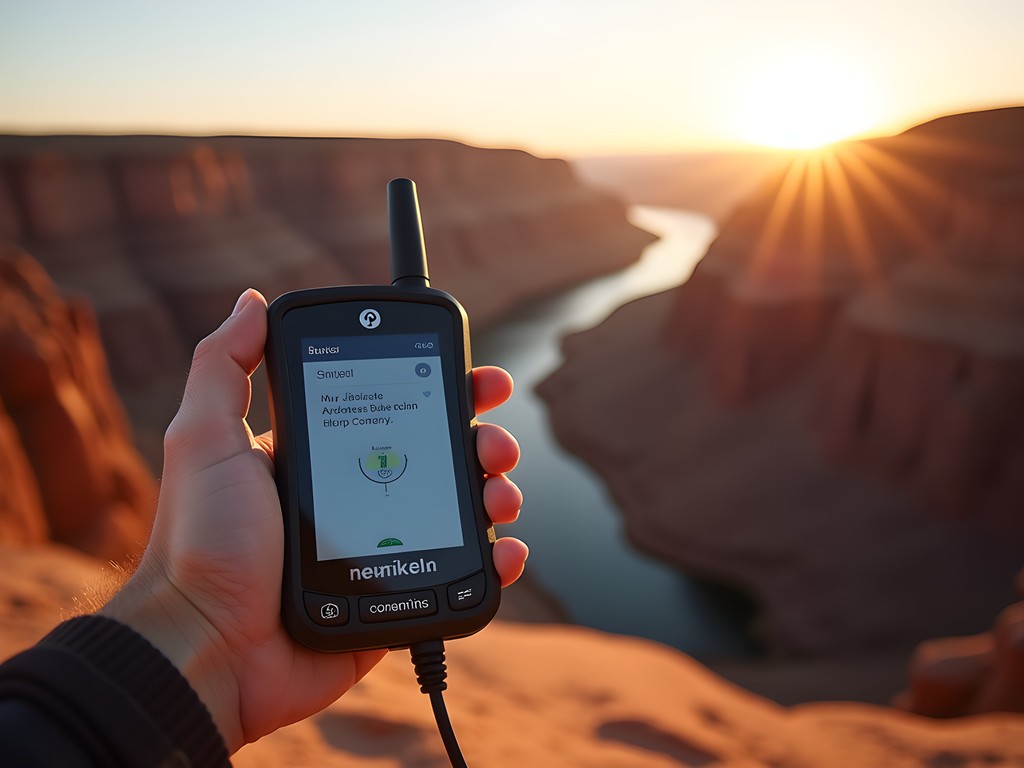
💡 Pro Tips
- Establish specific check-in protocols with at least two contacts before departing
- Purchase travel insurance that explicitly covers wilderness evacuation
- Camp at least 2 meters above the river level to avoid potential flash floods
Finding Solitude: The Spiritual Side of Canyon Trekking
Beyond the technical aspects of trekking Fish River Canyon lies a profound opportunity for connection with one of Earth's most ancient landscapes. As a documentary filmmaker, I've spent decades capturing the visual stories of wild places, but solo trekking offers a different kind of immersion—one where I become part of the narrative rather than its chronicler.
The canyon's geological timeline humbles even the most seasoned traveler. Walking alongside rock formations dating back 500 million years provides perspective that's increasingly rare in our accelerated modern world. I dedicate time each evening to what I call 'intentional witnessing'—sitting in complete stillness as the canyon's colors transform with the setting sun, observing how shadows articulate the landscape's contours in ways no camera could fully capture.
Solitude in such a vast space affects people differently. For me, it induces a meditative state that I've come to cherish. The absence of digital distractions, artificial light, and human-generated noise creates space for thoughts and observations that typically remain buried beneath the surface of daily life. I maintain a separate journal specifically for these reflections, distinct from my practical trekking notes.
The night sky above Fish River Canyon offers one of the most spectacular astronomical displays I've witnessed across seven continents. With zero light pollution and extraordinarily clear desert air, the Milky Way appears as a dense river of stars that seems close enough to touch. I always plan my trek to include at least one night near the full moon, when the canyon walls become ethereally illuminated in silver light, creating a landscape that feels more otherworldly than terrestrial.
The transformative power of this journey extends beyond the trek itself. Each time I've emerged from the canyon at Ai-Ais Hot Springs, I've carried with me a renewed clarity about my life's priorities and creative direction. There's something about navigating this ancient landscape alone that strips away pretense and reconnects you with your essential self. It's a journey I recommend not despite its challenges, but because of them.
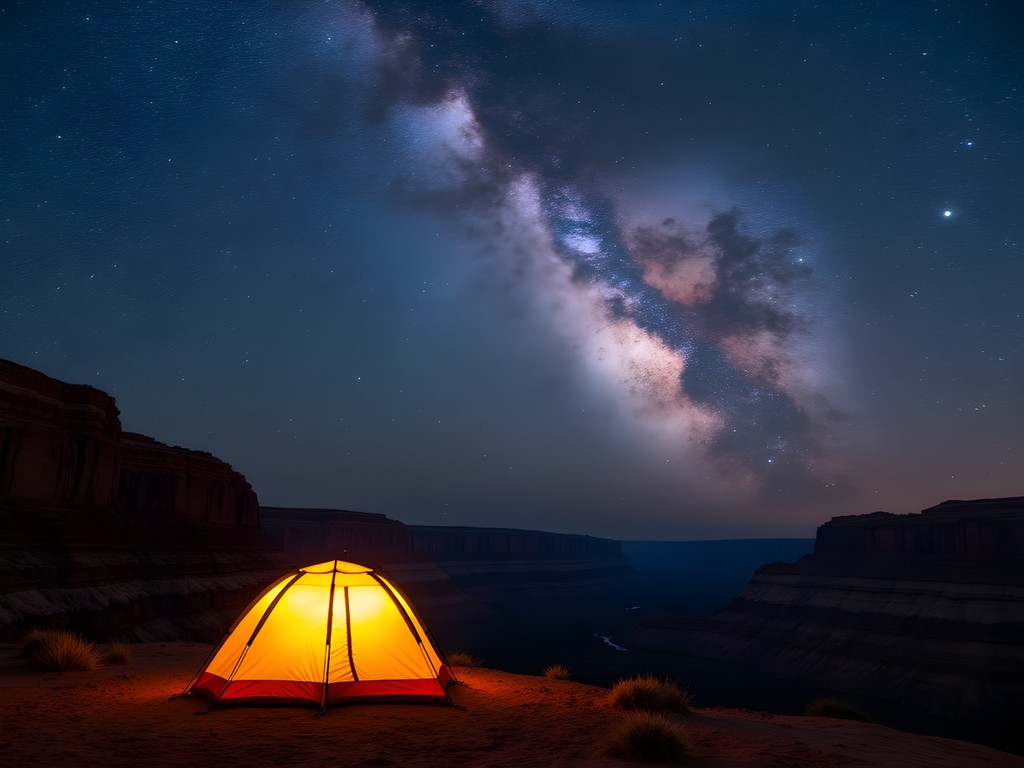
💡 Pro Tips
- Schedule at least 30 minutes of intentional stillness each day to absorb the canyon's majesty
- Plan your trek to include both new moon (for stargazing) and some moonlight (for night visibility)
- Carry a small notebook dedicated solely to personal reflections separate from practical notes
Final Thoughts
As I soaked my trail-weary feet in the therapeutic waters of Ai-Ais Hot Springs at journey's end, I reflected on what makes Fish River Canyon a singular experience for the solo trekker. It's not merely the physical challenge or the breathtaking landscapes—it's the rare opportunity to experience true self-reliance in an increasingly connected world. This canyon doesn't just test your physical endurance; it examines your decision-making, your adaptability, and your relationship with solitude. For those adequately prepared in body and mind, it offers rewards that extend far beyond the five-day journey: a profound connection to geological time, a recalibration of personal priorities, and the quiet confidence that comes from successful self-navigation through one of Earth's most demanding landscapes. If you choose to undertake this remarkable journey alone, do so with thorough preparation, deep respect for the environment, and openness to transformation. The canyon has been waiting half a billion years to share its story with you—approach it with the reverence it deserves.
✨ Key Takeaways
- Thorough preparation is non-negotiable for a safe solo trek through Fish River Canyon
- Emergency protocols and reliable communication systems provide essential security when trekking alone
- The canyon offers not just physical challenge but opportunity for profound personal reflection
📋 Practical Information
Best Time to Visit
May to September (Namibian winter)
Budget Estimate
$800-1200 USD including permits, transportation, gear, and recovery stay
Recommended Duration
5 days trekking + 2 days for travel/recovery
Difficulty Level
Challenging
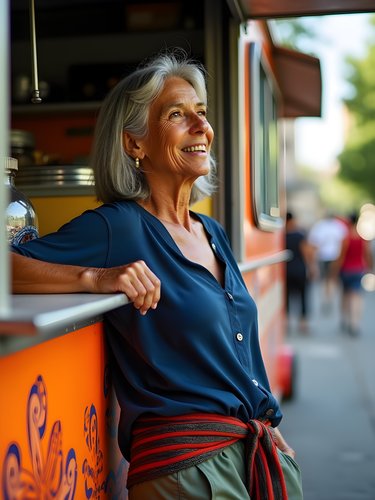
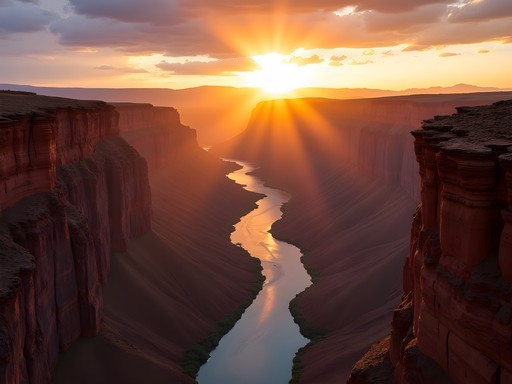


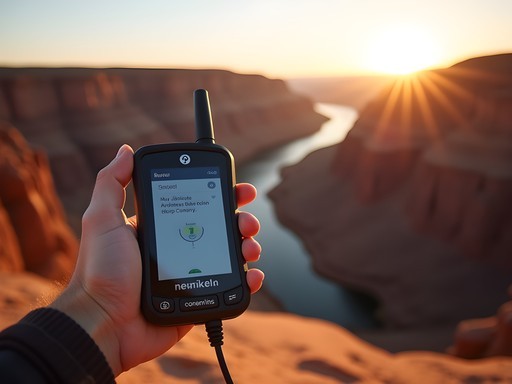
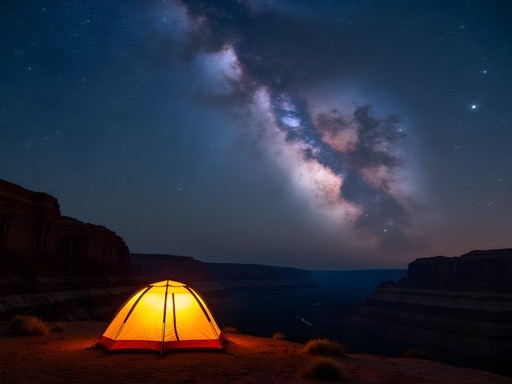


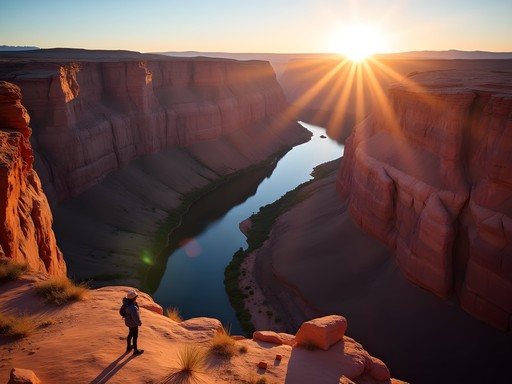
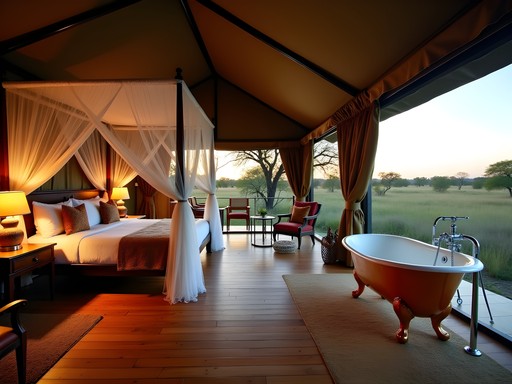
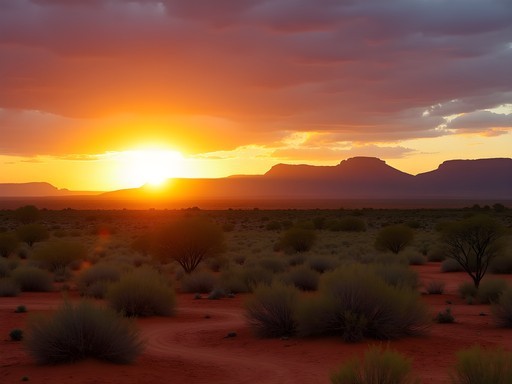



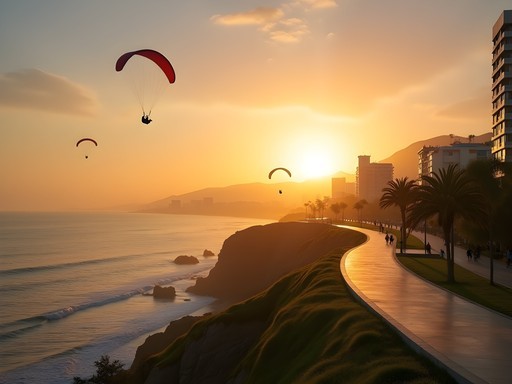

Comments
dreamone
How physically demanding is this trek? I'm reasonably fit but not a hardcore hiker. Could I manage it?
oceanguide
Not the author but I did this trek last year. It's tough! The first day descent is brutal on the knees and you need to be comfortable with some scrambling. If you can hike 15km with a full pack for multiple days, you should be fine though.
islandbuddy
Thanks for this detailed guide Nicole! I'm planning to do this trek next year but I'm a bit nervous about going solo. Did you ever feel unsafe or too isolated? The emergency protocols you mentioned make sense but I'm wondering how reliable the satellite coverage is in the canyon. Also curious about how much water you carried each day vs. filtering from the river?
Nicole Henderson
Great questions! I never felt unsafe, but definitely felt the isolation - in a good way! Satellite coverage was reliable at higher points, but I made sure to check in morning/evening. For water, I carried 3L daily and filtered river water when needed. The river flows year-round but can be brackish in places. Feel free to DM me if you have more specific questions about your trip!
Hunter Thompson
Brilliant write-up Nicole! I tackled Fish River Canyon last year and your safety protocols section is spot on. The emergency satellite communication tip saved me when I twisted my ankle on day 3. One thing I'd add - those morning temperature swings are brutal. I started each day with 4 layers and was down to shorts by 10am! Your point about water purification is crucial too - I filled up at the river daily with my water filter and had zero stomach issues. Looking forward to your next adventure!
oceanguide
Did you need a permit? How far in advance did you book?
Hunter Thompson
Yes! Absolutely need a permit and they're strict about it. I booked about 6 months ahead through NWR (Namibia Wildlife Resorts). They only allow 30 hikers per day and spots fill quickly, especially for peak season (May-September). They also require a medical certificate.
freeguy
WOW! Fish River Canyon has been on my bucket list forever! Nicole, your photos are incredible - that dawn shot at the rim literally gave me goosebumps. Can't wait to try this trek myself!
citybuddy
This guide is GOLD!!! Just booked my permits for next May and I'm equal parts terrified and excited! Those sunrise photos are making it all worth it though. Thanks for the detailed gear list - definitely upgrading my hiking boots before attempting this!
wanderadventurer
You're going to have an amazing time! Make sure to break in those new boots WELL before the canyon. My biggest advice: pack less than you think you need, except for first aid supplies!
sunsetqueen
I've been wanting to do this trek for years but always hesitated going solo as a woman. Did you feel safe the entire time? Were there other hikers around if you needed help? Your guide is giving me courage to finally book this!
Nicole Henderson
I completely understand your concerns! I did feel safe throughout, though properly prepared. You'll encounter other hikers daily - I'd often see 2-3 other groups. The trail has a permit system limiting numbers, so it's never crowded but you're not completely isolated either. The canyon's main trail is well-defined, and park rangers occasionally patrol. I'd say go for it - just make sure to register your hike dates with park authorities!
sunsetqueen
Thanks so much for the detailed response! That makes me feel a lot better. Going to look at permits for next season!
Claire Hawkins
What a comprehensive guide, Nicole! Your description of that dawn moment at the rim took me right back to my visit in 2019. Though I didn't solo trek like you (brave soul!), our family did the shorter day hikes around the upper canyon. My kids still talk about spotting mountain zebra near the viewpoints! I'm curious - how did you find the nights alone in the canyon? That's what would intimidate me most about going solo. The stars must have been incredible without light pollution though!
Nicole Henderson
Claire - the nights were actually my favorite part! Yes, initially a bit eerie, but the star canopy was unlike anything I've seen. I'd set up camp early to enjoy the sunset colors changing on the canyon walls. By night two, I was completely comfortable with the solitude.
Claire Hawkins
That sounds magical! Maybe I need to be braver on my next trip. My husband would certainly appreciate some star photography opportunities!
luckyadventurer
Nicole, your safety protocols section is spot-on. I did Fish River solo in 2021 and can't stress enough how important the medical certificate is - they strictly enforce this at the entrance. Also worth mentioning that the emergency satellite beacon saved my friend when he twisted his ankle badly on day 3 last year. I've been using the satellite messenger for all my solo treks since then. Did you have any issues with the boulder field section? That was trickier than I expected with a full pack.
Nicole Henderson
The boulder field was definitely challenging! I actually took off my pack and passed it ahead of me for some of the trickier sections. And yes, the medical certificate is non-negotiable - they turned away two hikers when I was there.
tripmaster
Great guide! I'm planning to go next year but wondering how much water you carried per day? The heat there sounds intense.
Nicole Henderson
I carried 3 liters per day minimum, plus water purification tablets for emergency use with the river water. The canyon gets brutally hot midday - I'd recommend a hydration bladder over bottles for easier access while hiking.
luckyadventurer
When I did it last year, I went through 4L daily in the hottest sections. Don't underestimate the desert heat, especially if you're going solo!
photoguide
Those sunrise photos from the canyon rim are absolutely breathtaking! Makes me want to plan a trip there ASAP.
Nicole Henderson
Thanks photoguide! That moment was definitely worth the 4am wake-up call. The light there is a photographer's dream.
Venture X
Premium card with 2X miles, $300 travel credit, Priority Pass